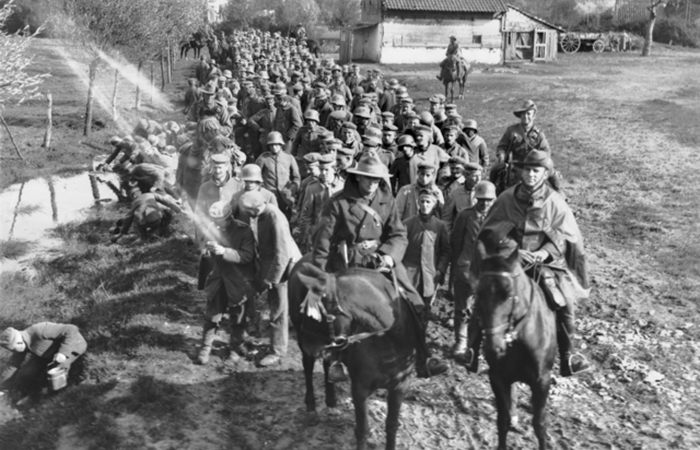
The worst single day in Australia's military history
18 May 2021- ANZACspirit
- History & commemoration
- Veteran stories
The battle for Broodseinde Ridge in Belgium on 4 October 1917 saw 1,279 Australian troops die in just one day of fighting – the deadliest day in Australia’s military history.

By Paul Carolan
Broodseinde Ridge was part of the Passchendaele Offensive – a ‘bite and hold’ strategy employed by the Allies after three years of fighting on the Western Front.
The attack consisted of 12 Allied divisions (three Australian, one New Zealand and eight British) against 10 German divisions.
It was a chilly 16C that morning, with a misty drizzle falling from the grey sky. It had been raining for several days and the ground was a sodden, muddy quagmire. Another 5mm of rain would fall on the day of the battle.
The Germans had the high ground and had prepared and planned an attack for the same time and place as the Allies. Correspondents Charles Bean and Keith Murdoch were also present to watch the attack.
Using the cover of darkness, the Australians moved to their hop-off trench and were in position in no-man’s land by about midnight. Here they waited.
The German artillery barrage began at about 5.20am and by 5.30am it had intensified to become a heavy bombardment. What the Allied army did not know was that the Germans were about to attack Zonnebeke, where the Australian 2nd Division were positioned.
A BRUTAL BARRAGE
Most of the German barrage fell onto the 1st and 2nd Divisions. At this point, Bean guessed they lost a seventh of the men, including those killed or wounded. The barrage lasted about 15 minutes.
By 5.45am there were lines of Germans advancing towards the Allied positions. One Australian officer wrote that the Australian losses were so great from the German artillery that they were glad they could get going.
When the sun rose at 6am, the Allies followed behind their artillery – slipping and sliding in the mud and bomb craters – as the barrage crept forward towards the German lines.
They walked about 90 metres before lines of Germans emerged out of the chilly mist, walking towards them with fixed bayonets. The Germans shot and then retreated, with the Allies in hot pursuit, following them back to their positions.
They reached the first objective – called the red line positions on the battle map – between 6.45am and 7.20am. They were supposed to wait there until 8.10am, but they kept up the momentum and moved forward to the final blue line objective, not wanting to give the Germans time to set up their defensive positions.
As the Australians approached, the Germans opened fire with their whizzbang 77mm artillery rounds. They did so from atop defensive positions on multiple pill boxes, machine gun posts and barbed wired entanglements still in place from the Allied bombardment.
A HARD-WON VICTORY
With the cover of darkness now gone, it was about teamwork, brains, speed and probably some bloody mindedness. The Lewis machine gunners fired at the German machine gunners to make them duck their heads down, allowing other men to get close enough to put grenades into the German pillboxes and flush them out.
The Australians achieved their final objectives by mid-morning, when they consolidated their new positions. During the day, the Germans counter attacked fiercely with men and artillery, but the Australians held on.
Later that day, Bean came across a German officer POW who said, “Your men are funny, they rob while they fight.”
His comment referred to the souvenir hunting conducted by uniformed Australian ‘tourists’.
In April 1918, the positions would unfortunately be retaken by the Germans, only to return to the Allies in September 1918. Such is the ebb and flow of the tides of war.
As a result of the battle, two Australians were awarded Victoria Cross medals – Lewis McGee (buried in Tyne Cot Cemetery) of the 40th Battalion and Walter Peeler of the 3rd Battalion. Seven British soldiers were also awarded VCs for their actions on that day.
Australia suffered a total of 6,432 casualties – 1,279 killed and 5,153 wounded.
German history refers to the battle as ‘the black day of October 4’, while on the other hand, Australian history tells us it was an overwhelming success because it achieved all its military objectives.
What is not widely known, however, is that numerically the battle for Broodseinde Ridge is the single worst day in Australia’s military history.
To compare it to other notable battles, 751 people died at ANZAC Cove and almost 2,000 died as a result of the battle of Fromelles – both on the day and in the days that followed – making Fromelles the deadliest battle in Australian history.
Related News
Loading

